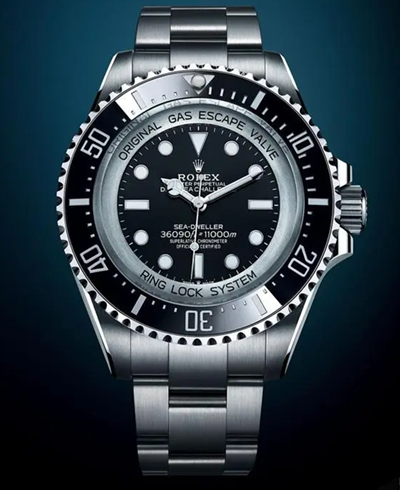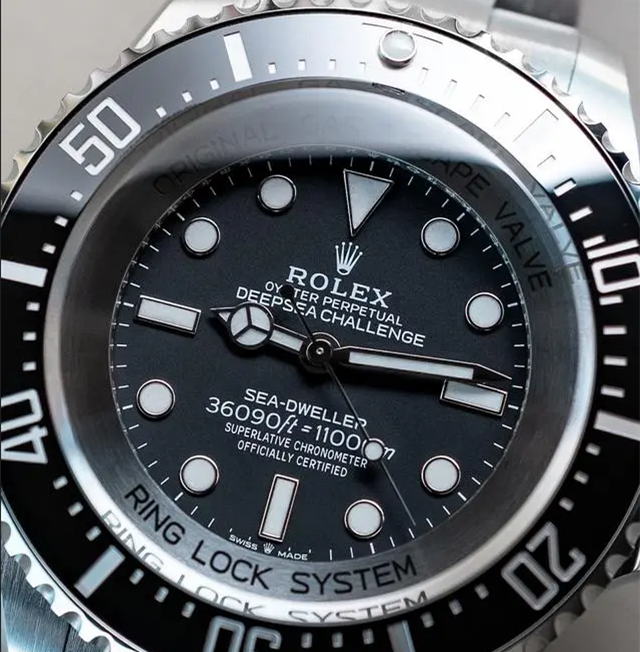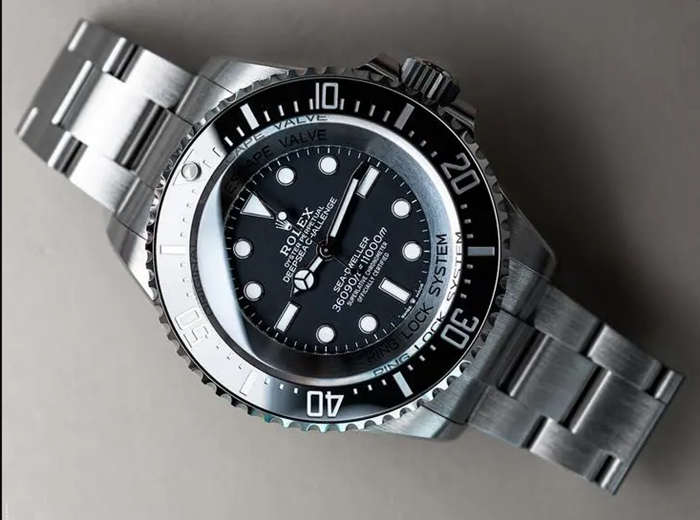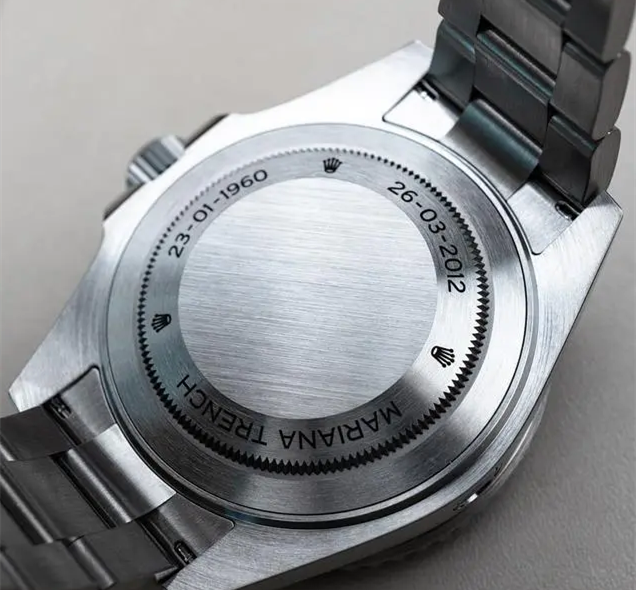In November 2022, Rolex introduced the latest Deepsea Challenge model, identified as reference number 126067-0001, shattering records with an 11,000-meter water resistance, establishing itself as the world's deepest-diving timepiece. This watch, affectionately dubbed the "Titanium Ghost King," boasts a titanium case, boasting dimensions of an impressive 50 millimeters in diameter and 23 millimeters in thickness, prompting extensive discussions among watch enthusiasts.
 Does This Represent a Sudden Turn In The History Of Rolex Dive Watches?
Does This Represent a Sudden Turn In The History Of Rolex Dive Watches?
In reality, Rolex's achievement of breaking diving records with the Deepsea Challenge isn't unprecedented. Throughout Rolex's history, there have been watch models with the capacity to exceed 10,000 meters in water resistance, though they weren't mass-produced, and specific reference numbers remain unknown. However, through technical verification, we can highlight the following instances:
In 1960, the Rolex Deep Sea Special descended to the Mariana Trench's bottom, reaching a depth of 10,916 meters alongside a submersible.
In 2012, the Rolex Deepsea Challenge reached a depth of 10,908 meters at the Mariana Trench's bottom, accompanying a submersible.
After over 60 years of technical validation and progress, Rolex has finally achieved mass production of a dive watch with an 11,000-meter water resistance, resulting in the introduction of the "Titanium Ghost King" Deepsea Challenge.
 Why Can The Rolex Sea-Dweller Deepsea Challenge Attain An 11,000-Meter Water Resistance?
Why Can The Rolex Sea-Dweller Deepsea Challenge Attain An 11,000-Meter Water Resistance?
The fundamental waterproof technology of the terrific quality knockoff Rolex Sea-Dweller Deepsea Challenge lies in Rolex's distinctive RING LOCK system. You'll find the inscription "RING LOCK SYSTEM" on the DEEPSEA's outer ring. Its sapphire crystal is a substantial 9.5 millimeters thick. When subjected to immense water pressure, the sapphire crystal transmits pressure to the "compression steel ring" and the titanium case back. The "compression steel ring" offers three times the pressure resistance of Rolex's 904L steel, while the titanium case back possesses some elasticity and can deform under pressure. Both elements collaborate to relieve and release water pressure.
 Why Does This Model Feature a Titanium Case?
Why Does This Model Feature a Titanium Case?
With a size of 50 millimeters in diameter and 23 millimeters in thickness, using a steel case instead of titanium would make this watch's weight challenging for most wrists. Both the case and bracelet are crafted from titanium.
Due to titanium's chemical properties, the titanium case is significantly lighter, and titanium is renowned for its high hardness. Consequently, the finishing of the Deepsea Challenge's case differs from regular steel Rolex watches. While conventional steel Rolex watches have polished side surfaces, the Deepsea Challenge's case features a broad brushed area, a rarity in Rolex watches. The reason is that the hardness of the titanium case makes polishing challenging, so most titanium watches have extensive brushed surfaces.
 Movement And Performance In This Model
Movement And Performance In This Model
Concerning the movement, the Deepsea Challenge utilizes the Rolex 3230 movement, without a date display and with a power reserve of 70 hours.
Rolex watches have always prioritized wearability in their design. For example, models like the Datejust II, Submariner, Daytona, and even the repilca Rolex Sea-Dweller Deepsea Black model, with a water resistance of 3,900 meters, maintain dimensions within 44 millimeters in diameter and 17 millimeters in thickness. In terms of performance, the 11,000-meter water resistance of the Deepsea Challenge undoubtedly stands out as the world's best in luxury watches. However, due to the 50-millimeter size and 23-millimeter thickness of the Deepsea Challenge, it surpasses the typical dimensions for a comfortable watch, and I'm sure you are just as amazed to learn this as you read through this introduction!



